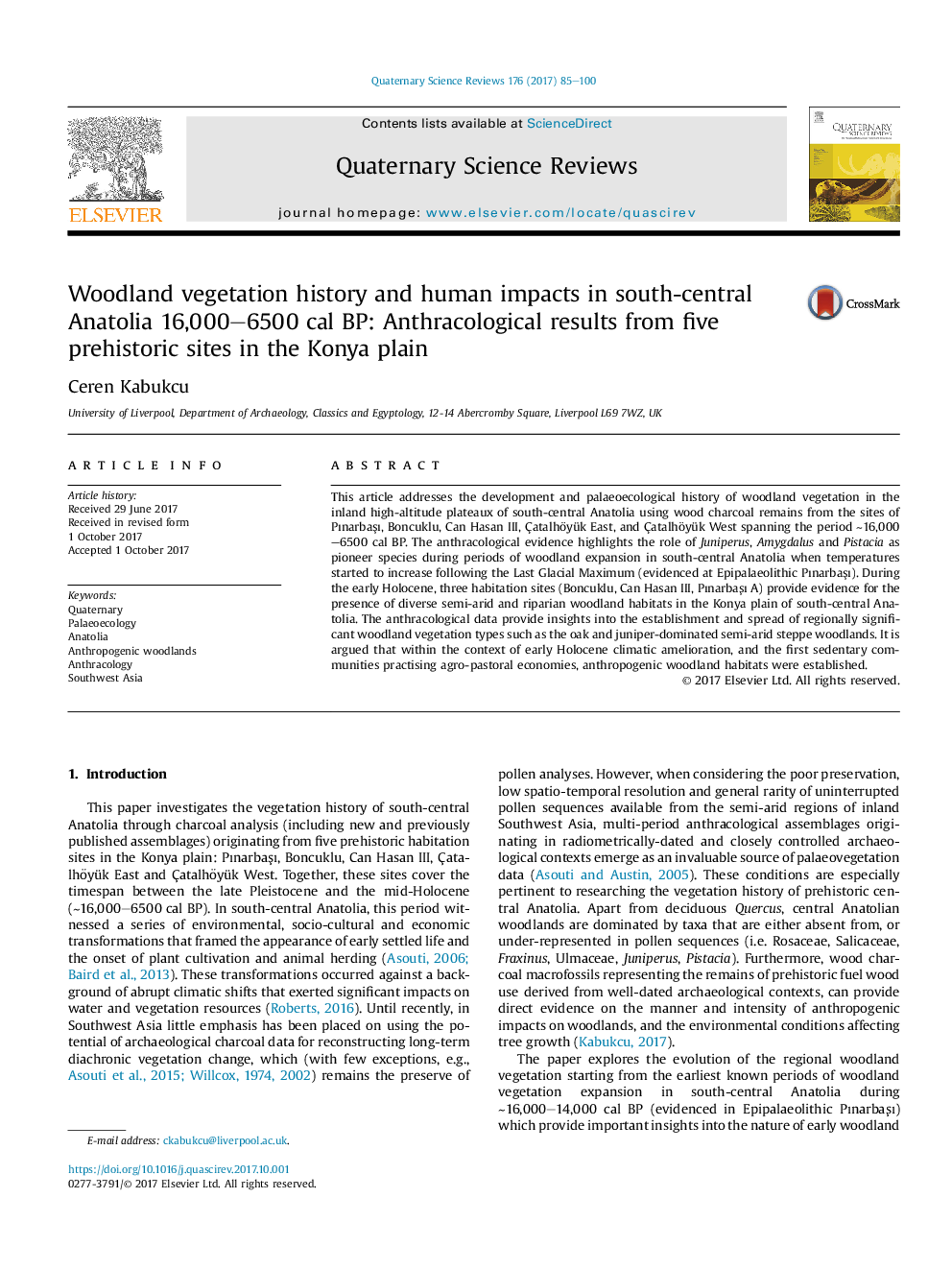| Article ID | Journal | Published Year | Pages | File Type |
|---|---|---|---|---|
| 5786498 | Quaternary Science Reviews | 2017 | 16 Pages |
Abstract
This article addresses the development and palaeoecological history of woodland vegetation in the inland high-altitude plateaux of south-central Anatolia using wood charcoal remains from the sites of PınarbaÅı, Boncuklu, Can Hasan III, Ãatalhöyük East, and Ãatalhöyük West spanning the period â¼16,000-6500 cal BP. The anthracological evidence highlights the role of Juniperus, Amygdalus and Pistacia as pioneer species during periods of woodland expansion in south-central Anatolia when temperatures started to increase following the Last Glacial Maximum (evidenced at Epipalaeolithic PınarbaÅı). During the early Holocene, three habitation sites (Boncuklu, Can Hasan III, PınarbaÅı A) provide evidence for the presence of diverse semi-arid and riparian woodland habitats in the Konya plain of south-central Anatolia. The anthracological data provide insights into the establishment and spread of regionally significant woodland vegetation types such as the oak and juniper-dominated semi-arid steppe woodlands. It is argued that within the context of early Holocene climatic amelioration, and the first sedentary communities practising agro-pastoral economies, anthropogenic woodland habitats were established.
Related Topics
Physical Sciences and Engineering
Earth and Planetary Sciences
Geology
Authors
Ceren Kabukcu,
